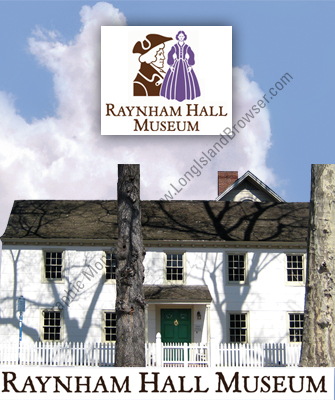Raynham Hall
Museum - The Historic Home of America's
First Documented Valentine - Oyster Bay
Nassau County
Long Island New York
Raynham Hall Museum historic house which served as a
British headquarters during the
Revolutionary War is the home of America's first documented Valentine. On
February 14 over two hundred years ago, Lt.
Col. John Graves Simcoe of the Queens
Rangers asked Sarah "Sally" Townsend to
"choose me for your Valentine!".
|
|
|
|
|
|
|
|
 |
 |
|
Raynham Hall
Museum
The Historic Home of America's First
Documented Valentine
Raynham Hall Museum, which served as a
British headquarters during the
Revolutionary War, can lay claim to a truly
historic "first" - it is the home of
America's first documented Valentine. On
February 14 over two hundred years ago, Lt.
Col. John Graves Simcoe of the Queens
Rangers asked Sarah "Sally" Townsend to
"choose me for your Valentine!".
In 1914, Julia Weeks Coles (niece of Helene
DeKay) and her sister Sallie Townsend Coles
purchased Raynham Hall for $100 to preserve
it from change. It was used as a tea room
and meeting place for the Oyster Bay
Historical and Genealogical Society. The
Coles sisters created a museum-like setting
by furnishing the rooms in Raynham Hall with
Townsend Family "relics". In 1941 Miss Coles
gave the house to the Daughters of the
American Revolution, who kept the house open
as well as maintained the tea room. As
upkeep became too burdensome, the DAR
offered the building to the Town of Oyster
Bay. In 1947 the Town took possession,
making the decision to restore the original
colonial house to its circa 1740 appearance.
With the help of the Friends of Raynham
Hall, incorporated in 1953, the building
officially opened as a museum focusing on
the historical events of the eighteenth
century.
Raynham Hall was built circa 1738 as a
two-story frame house with central brick
chimney, gable roof, flush siding of wide
boards and a five-bay façade with an
entrance in the middle. The house contained
four rooms, two on each level, with a garret
or attic under the roof. The first floor
consisted of a "hall" and "parlor" that
flanked a narrow passage with a winding
staircase built in front of the chimney. On
the second floor were two "chambers" that
corresponded to the hall and parlor below.
Fireplaces opened into all four rooms from
the central chimney. Around 1740, Samuel
Townsend, who had purchased the property
several years earlier, built a lean-to
section on the north side, or rear, of the
house. The addition, which increased the
number of rooms to eight, included a kitchen
and storage room on the first level and
chambers above. The shed roof of the lean-to
section extended the rear slope of the main
gable roof, creating the distinctive
"saltbox" outline.
Architectural and documentary evidence
suggest that at least one of the first-floor
rooms featured wall paneling. The original
parlor fireplace wall appears to have had
paneling that extended from floor to ceiling
as well as a decorative mantel and over
mantel. The mantel, over mantel and parts of
the paneling are today incorporated into one
of the restored colonial period rooms. No
substantial changes were made to the house
during the remainder of the eighteenth
century. The museum's collections include a
pencil sketch of the house, dating to circa
1800, that shows a one-story porch extending
the full breadth of the façade. The porch,
which must have been added shortly before
1800, seems to be the only improvement made
by the Townsends. The sketch clearly depicts
the paneled Dutch door that is in place
today and dates back to the mid-18th-century
house.
Today, the grounds of Raynham Hall Museum
encompass two thirds of an acre, forming an
oasis of beauty in the heart of the historic
village of Oyster Bay. The gardens have been
designed to correspond to the two historical
periods represented by the house, the
colonial and Victorian. Each is based on
landscaping principles of the period and
includes historically accurate plantings.
The colonial garden, located at the front
and west side of the c.1740 house, features
brick walks bordered by daylilies and ferns,
French lilacs and boxwood hedges, and
ornamental elements such as teakwood
benches. On the west side of the 1850's
addition is the Victorian garden. Serpentine
ivy beds combine with an assortment of
rhododendrons, mountain laurels and white
pine trees to create a picturesque effect.
Ornamental features include a cast-iron urn
in the center of a formal parterre outside
the dining room bay window and a pair of
urns on pedestals flanking a brick terrace
at the rear of the garden.
Admission
$5.00 for adults
$3.00 for student and senior citizens
Free for service people and children under 6
years of age.
Hours
Tuesday-Sunday 1:00PM-5:00PM |
|
|
|
|
|
|
|
 |
|
|
|
Raynham Hall
Museum
The Historic Home of America's First
Documented Valentine
20 West Main Street
Oyster Bay, NY 11771
t 516-922-6808
www.raynhamhallmuseum.org
 |
|
|
|
|
|
|